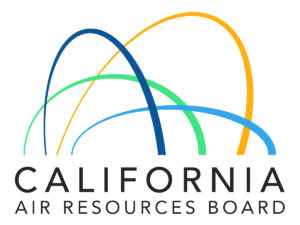Written on: November 1, 2019 by Doug Raymond
CARB
The California Air Resources Board (CARB) continues its rulemaking on Consumer Products. The category field has been reduced from 47 categories to 17 categories. As reported last month, CARB staff has been conducting webinars.
On Sept. 20, CARB held its first webinar; it dealt with fragrance usage and the use of AFC-152a. Regarding fragrance, staff is adjusting the amount of volatile organic compounds (VOC) in fragrance for several categories. In the past, CARB had always considered all fragrances as 100% VOC. Because of presentations from the fragrance industry, CARB is lowering the VOC percentage to 25% for certain categories and a maximum incremental reactivity (MIR) value of 2.8. For other categories, mainly cleaning and degreasing  products, the fragrance profile will be maintained at 100% VOC and a 4.04 MIR value.
products, the fragrance profile will be maintained at 100% VOC and a 4.04 MIR value.
CARB staff will also be adjusting the overall emission inventory. This change will affect the VOC reductions that were planned for the categories where the VOC percentage has been reduced to 25%. Because this rulemaking is a “zero sum game,” emission reductions that cannot be attained in these categories will then need to be attained in other categories. The overall reductions from the entire category will likely not have any effect on the emission reductions that are needed.
Regarding HFC-152a— it is an exempt VOC compound, but is, however, a slight global warmer. Currently, CARB regulations for Consumer Product and Refrigeration do not consider this compound as a global warmer due to its low global warming potential. CARB is concerned about increasing the use of HFC-152a with any new reformulation options. This puts CARB in a tough position because HFC-152a has been an option to replace VOC propellants in the past, especially in personal care products. During the webinar, CARB staff explained the issue but did not discuss what its actions will be on HFC-152a. We will need to wait and see what staff has planned for us on this compound.
On Oct. 2, CARB had another webinar planned to discuss the following categories:
Aerosol Crawling Bug Insecticide, Charcoal Lighter Fluid, Aerosol Cooking Spray, Floor Wax Stripper and Paint Stripper. Staff had to cancel this webinar due to technical difficulties, so these categories were added to the Oct.17 webinar. There was a positive outcome of this cancellation—CARB staff provided slides with further information on these categories and you are encouraged to review them.
On Oct. 4, CARB held an in-person workshop to discuss definitional changes to the regulation. Both Industry and CARB had some suggestions. Currently, there are only a few definitions that CARB wants to discuss: Institutional or Industrial Products, Metal Polish, Aerosol Adhesive, Energized Electronic & Electrical Cleaner, Disinfectant/Sanitizer, General Purpose Degreaser and Paint Thinner. In addition CARB would like to discuss a broad look at labeling of products (which means claims on your website).
CARB has requested comments on this workshop by Nov. 1. Now is the time to request any changes that you need on this workshop.
Webinars will continue. By early November, CARB plans to have another in-person meeting to share its schedule and categories for moving forward in product regulation. More importantly, we expect to see the VOC limits and dates proposed for each category.
Remember, CARB needs four tons of VOC emission reduction per day by 2023 and a total of eight tons per day of emission reduction per day by 2031. These needs may go up slightly. This is a significant amount of reduction needed. CARB plans to finish this rulemaking by the end of 2020.
Canada, New York & New Jersey
Comments were due in early Fall. We are waiting for announcements.
Colorado
Remember, the New Consumer Products Rule and Architectural & Industrial Maintenance (AIM) Coatings Rule is effective May 1, 2020. SPRAY